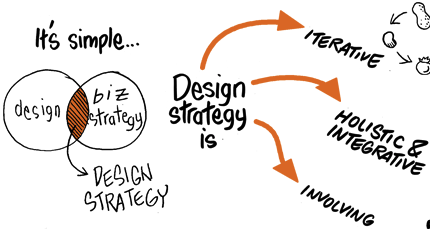This discipline seeks to understand what goes through the minds of users as they interact with products, web sites, apps and services with the intent of influencing their perceptions and behaviour to produce cohesive, predictable, and desirable effects, meeting the user’s own goals and measures of success and enjoyment, as well as the objectives of the designer. The term was first coined by Don Norman, in his own words: “I invented the term because I thought human interface and usability were too narrow. I wanted to cover all aspects of the person’s experience with the system including industrial design, graphics, the interface, the physical interaction, and the manual."
Why?
User experience (UX) is how a person feels when interfacing with a system. The system could be a website, web/mobile application, video game, digital media, or a physical product and, in modern contexts, is generally denoted by some form of human-computer interaction (HCI). Application of UX Design results in a better product/service/experience and can reduce and simplify the product development process. Successful UXD can drive more sales, higher adoption rates, and increased productivity.

What?
The following describe key activities of a User eXperience Design process:
 Understanding the business levers and connecting UX design decisions to those levers to drive business success. Taking an holistic appraoch to the design, including all aspects and touch-points the design will have an impact on.
Understanding the business levers and connecting UX design decisions to those levers to drive business success. Taking an holistic appraoch to the design, including all aspects and touch-points the design will have an impact on.
User flows are created to depict the primary tasks users will perform and the main pathways they will take through a website, application, service, product, or digital media.

Organising content, flow, and headings of a design using affinity mapping/diagrams, based on clear principles derived through evidence gathering.
 Designing interactive digital products, environments and user-facing parts of a system, service, product or game to help a user effectively and efficiently perform a task.
Designing interactive digital products, environments and user-facing parts of a system, service, product or game to help a user effectively and efficiently perform a task.
UX documentation to capture the strategy/objectives, describe the flow, IA, and interactions using annotated wireframes, and style guides, sufficient to enable visual designers to create composites, and developers to write code.
When
 UXD is the enabler for a User Centered Design approach to product development. Which puts the user central to the development process to optimize the product/service around how users can, want, or need to use the product/service, rather than forcing users to change their behavior to accommodate a product.
UXD is the enabler for a User Centered Design approach to product development. Which puts the user central to the development process to optimize the product/service around how users can, want, or need to use the product/service, rather than forcing users to change their behavior to accommodate a product.
Where

UXD and UCD are integral to product design and require working closely with all stakeholders in the business to formulate the correct strategy and align with business prioirities. Requiring co-location at a customer site, especially at the project outset, and regular liason with project leads and business sponsors throughout the project.
How
 Following an agreed project brief and Scope of Works (SoW), a Project Initiation Document (PID) is created, which outlines the aspects of the project and definition of the final deliverables. An agreed project plan is also included with specified milestones, and progress meetings. Project documentation is kept online and a handover meeting culminates the project completion.
Following an agreed project brief and Scope of Works (SoW), a Project Initiation Document (PID) is created, which outlines the aspects of the project and definition of the final deliverables. An agreed project plan is also included with specified milestones, and progress meetings. Project documentation is kept online and a handover meeting culminates the project completion.



